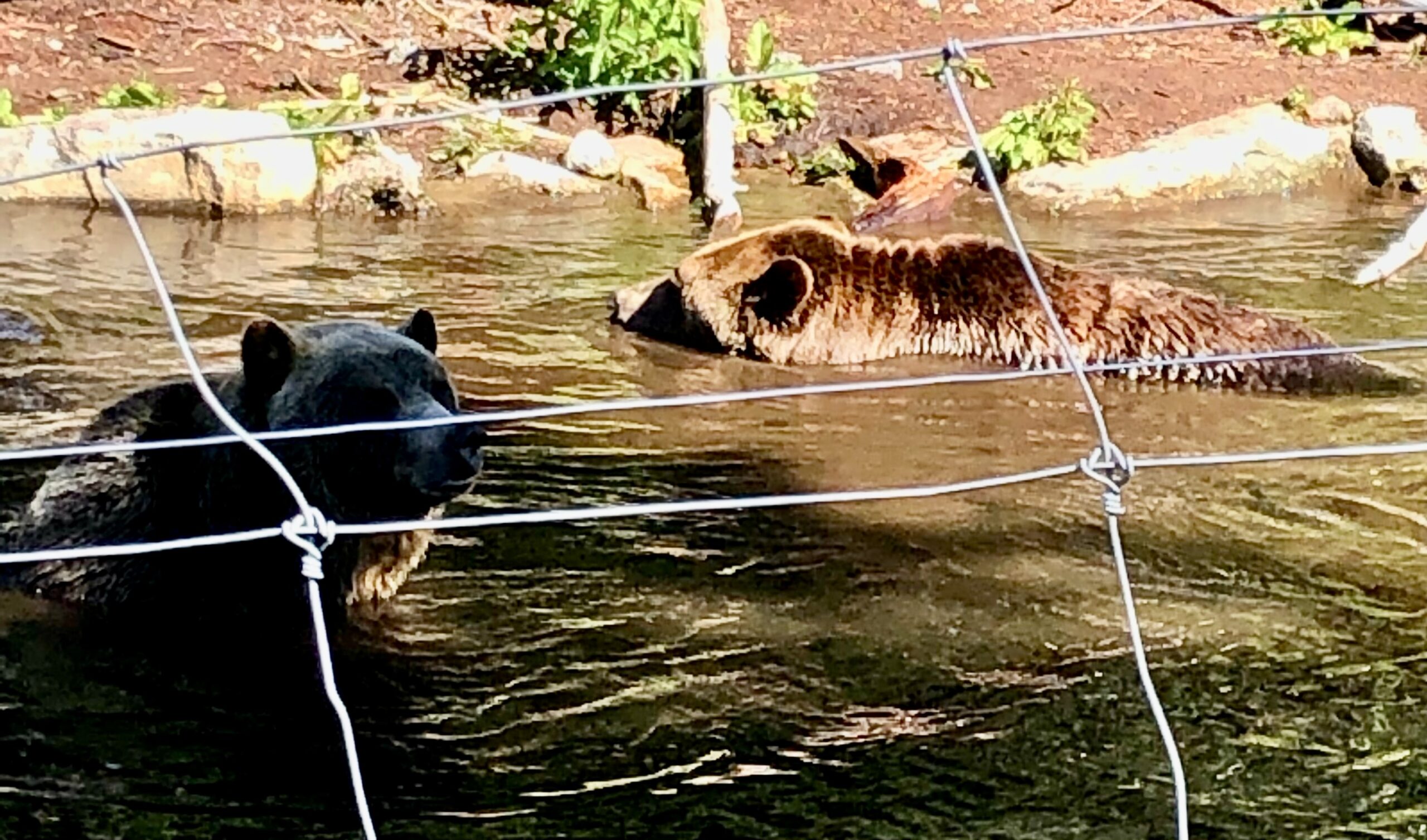I am standing next to two speechless children twenty feet from two grizzly bears. Had we been on a trail, it would have triggered sheer panic, although it’s best to stay calm and retreat slowly.
We are in Vancouver where the wild is part of life. Birds of prey soar over Stanley Park, raccoons sip from fountains, coyotes sneak downtown, and on the North Shore where I live, cougars, and black bears (not grizzlies) scout the neighborhoods except when they hibernate.
You could be at the Vancouver Art Gallery and then thirty minutes later, be watching the grizzlies at Grouse Mountain Refuge for Endangered Wildlife, and where hilarious lumberjacks put on an entertaining show.
Something about Vancouver and Grouse Mountain
To see the pair of bears, head for the North Shore and follow the signs to Grouse Mountain. From there, the aerial tramway will lift you along the forested incline. At a top elevation of 1,232 meters (4,039 feet), you’ll be at the peak of the Vancouver world. Or you can take the seasonal free shuttle from Canada Place.
As you watch Vancouver spread to the West into the Pacific Ocean, the snow-capped Mount Baker rises in the South from Washington State. Below in the foothills, the Capilano River meanders to the Cleveland Dam and swells into Capilano Lake.
BC is home to one-quarter of the bear population of North America. At Grouse Mountain, only an electrified fence separates us from these two furry muscle masses that could flip a car in the blink of an eye. “The bears have never been aggressive,” a ranger says.
Bears with an Attitude
Grinder and Coola have lived in their five-acre stomping grounds since they were orphaned cubs. They ignore us perhaps because bears have poor eyesight, or because they expect nothing from visitors since feeding bears is forbidden. There is a reason for that.
Wherever a bear finds food, it will return. Sadly, if it feeds at a house, “a fed bear is a dead bear.” Conservative Officers will organize its capture and relocation, but a determined animal will be euthanized if it returns a third time. Bears are undiscerning foodies yet with a sweet tooth; I had to remove my hummingbird feeder!
Only the sound of the ranger’s van gets their attention and when it doesn’t stop, they return to their routine like an old couple used to each other’s company, moody days included. With a sense of smell 1,000 times better than ours, they sniff the air or perhaps the food in a visitor’s backpack unless it’s someone’s ‘unbearable’ Cologne. Overall, life is good with punctual fresh food delivery, a pond for leisure baths, a snowy mound for wrangling, and shady bushes for napping.
A Not so Traditional Canadian Trade
Grouse Mountain is a year-round activity-packed resort, and since it is summer, the 45-minute lumberjack show is about to start. From the bleachers, we observe the props: a high pole anchored by cables, a pond, and a log cabin. Two tree trunks and two saws hint at a sawing face-off, a typical performance at professional lumber jacking competitions.
What unfolds is a mix of professional, athletic, and comedic acts led by a witty emcee. Sometimes, it involves a willing or anonymous spectator…
Birds of Prey Close-Up
Beaver Tails (large fritters) at a vending hut delay us to the Birds in Motion Demonstration show. A disapproving osprey skims my grandson’s hair unless it’s to check out the sweet stuff in his hand. Often confused with a Bald Eagle, ospreys are smaller and don’t have the iconic yellow beak on a white-feathered head.
At the end of the show, we approach a Red-Tailed Hawk perched on its handlers’ gloved hands. A Great Horned Owl studies us with evident wisdom. The children learn not to confuse the feathery tufts on top of its head with ears; they are a warning signal. Birds have side vision only, but owls can look straight at us, in the captivating way that makes them children’s favorite birds.
More about Grouse Mountain
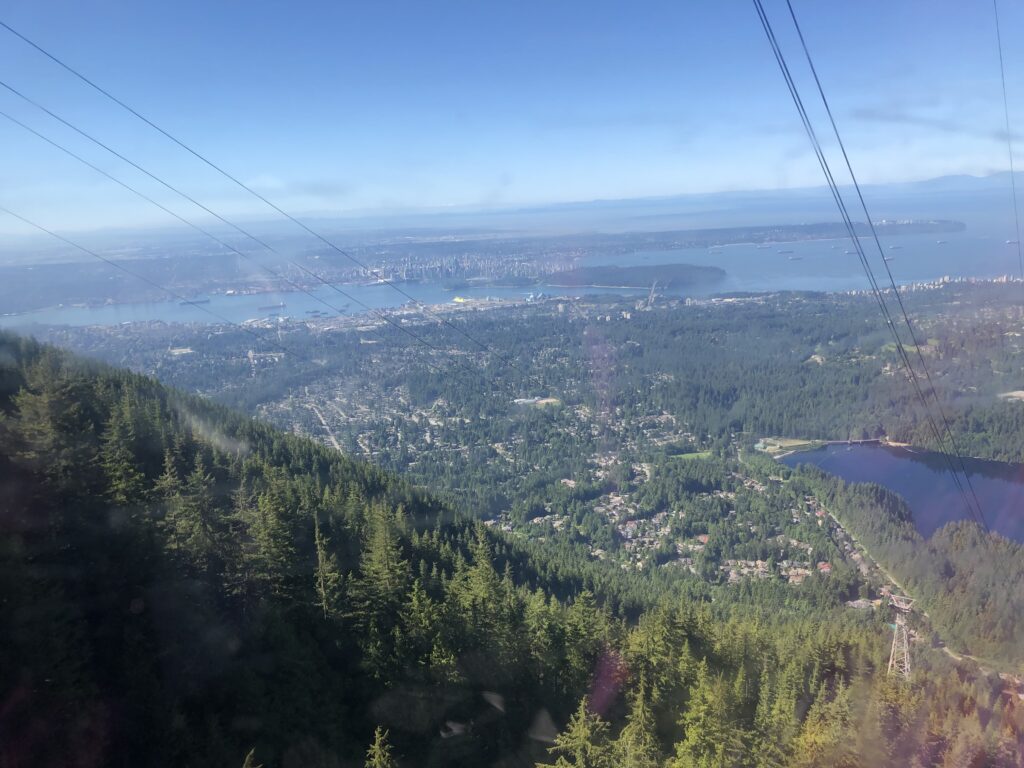
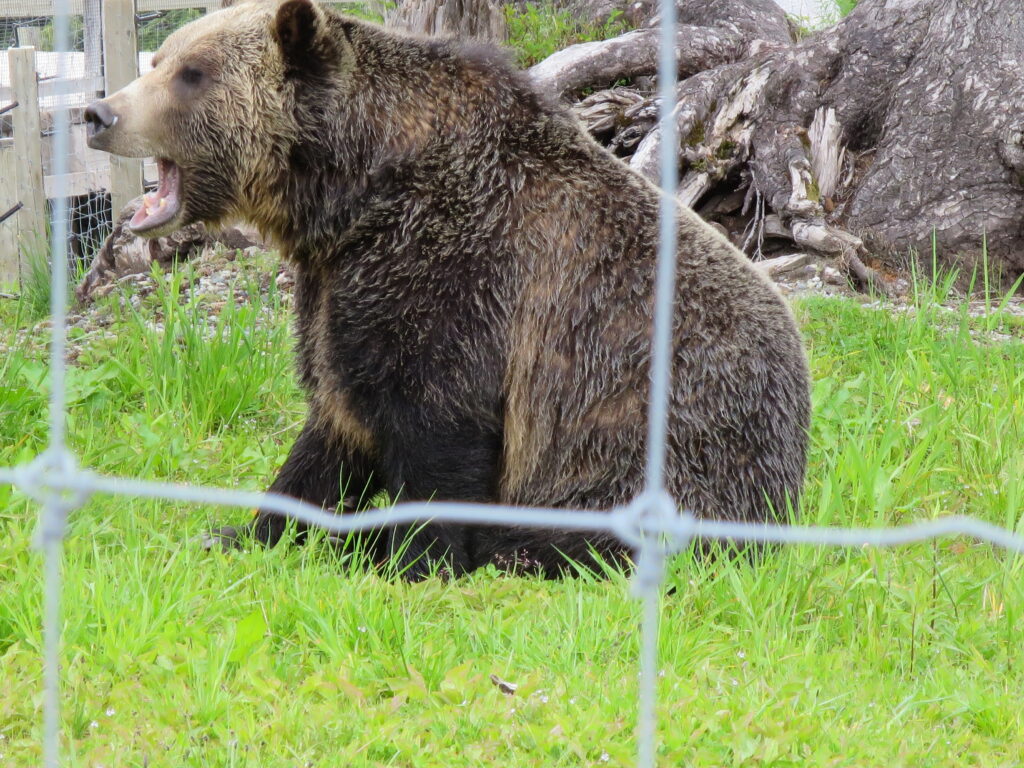
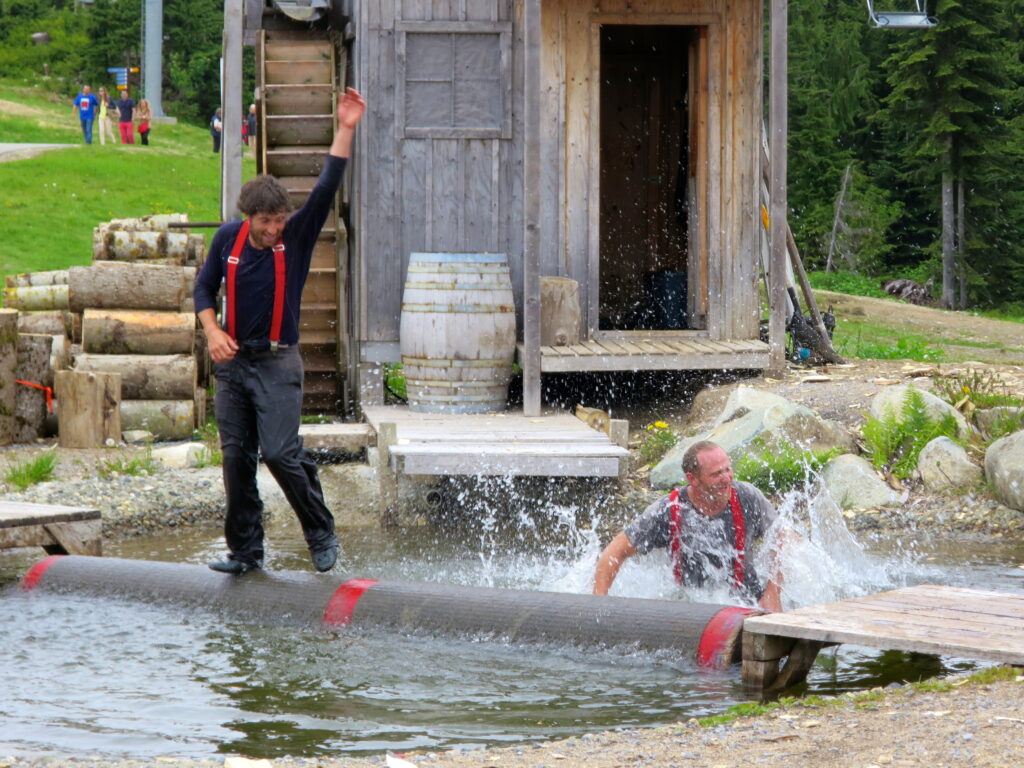
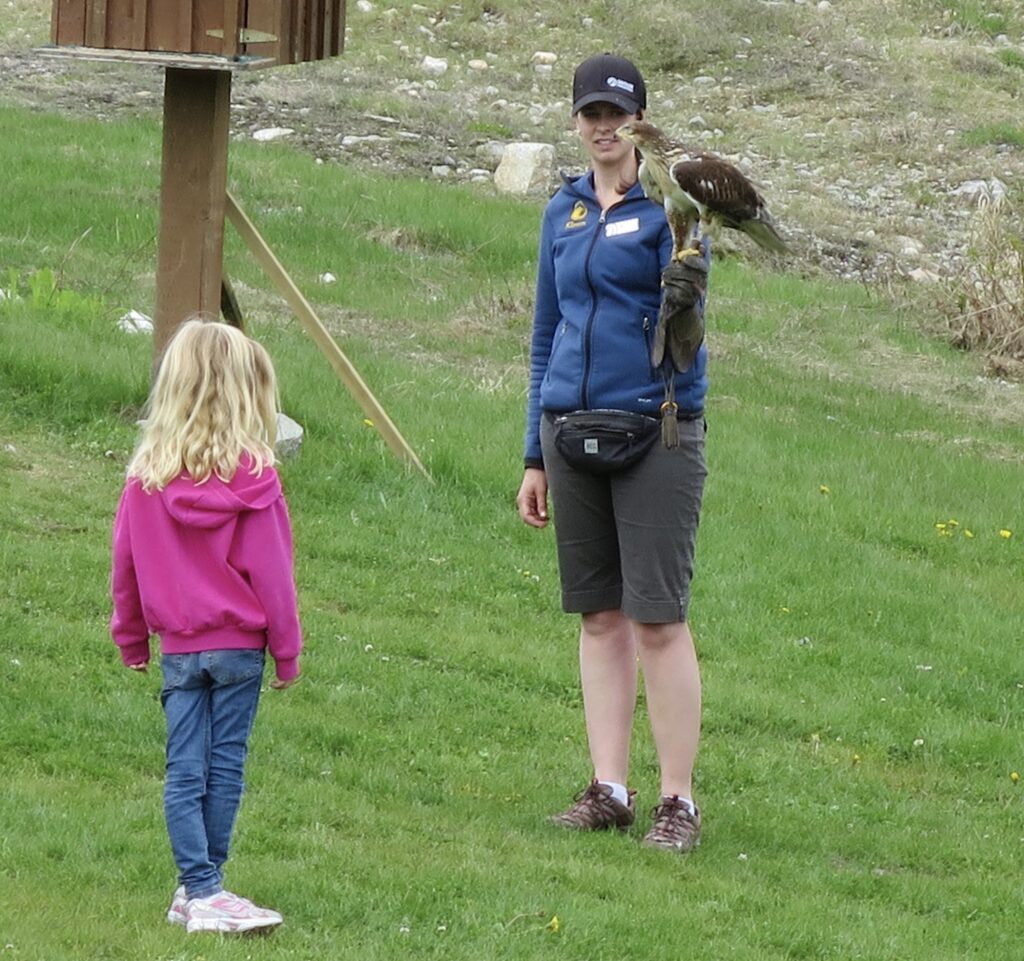
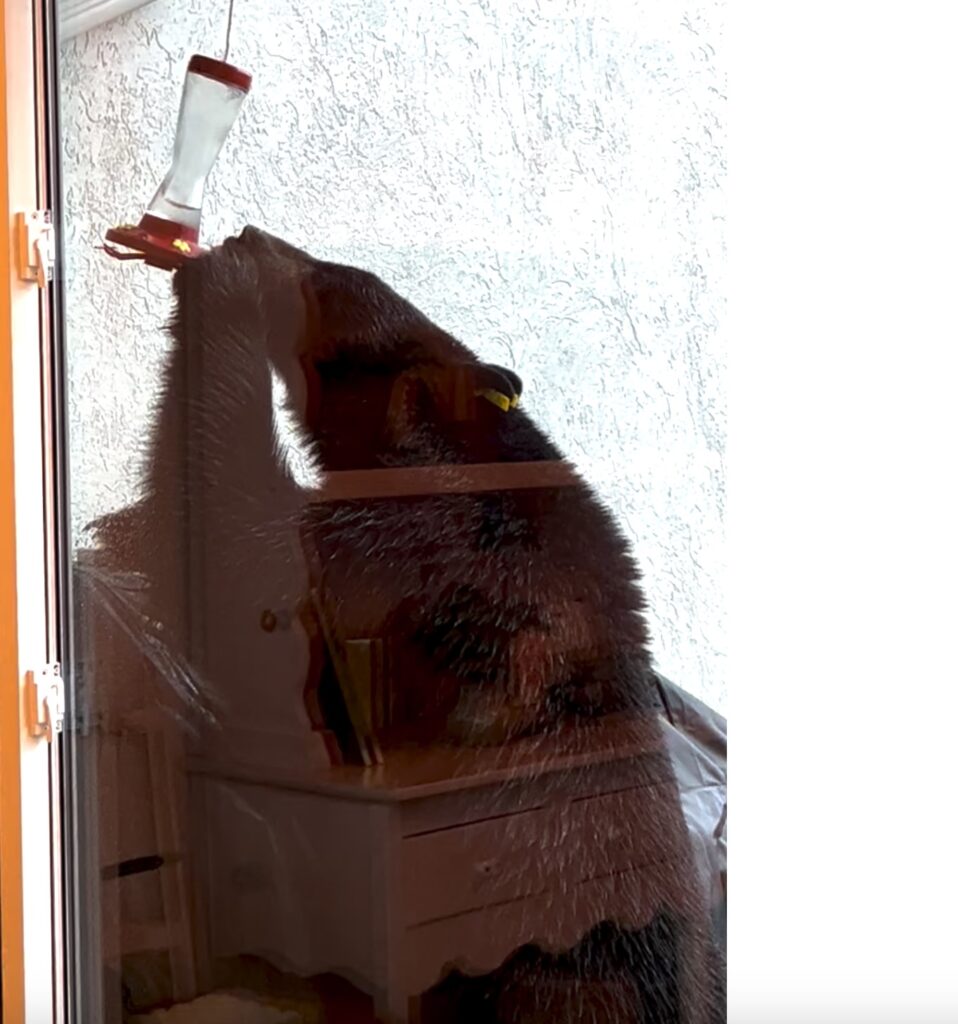
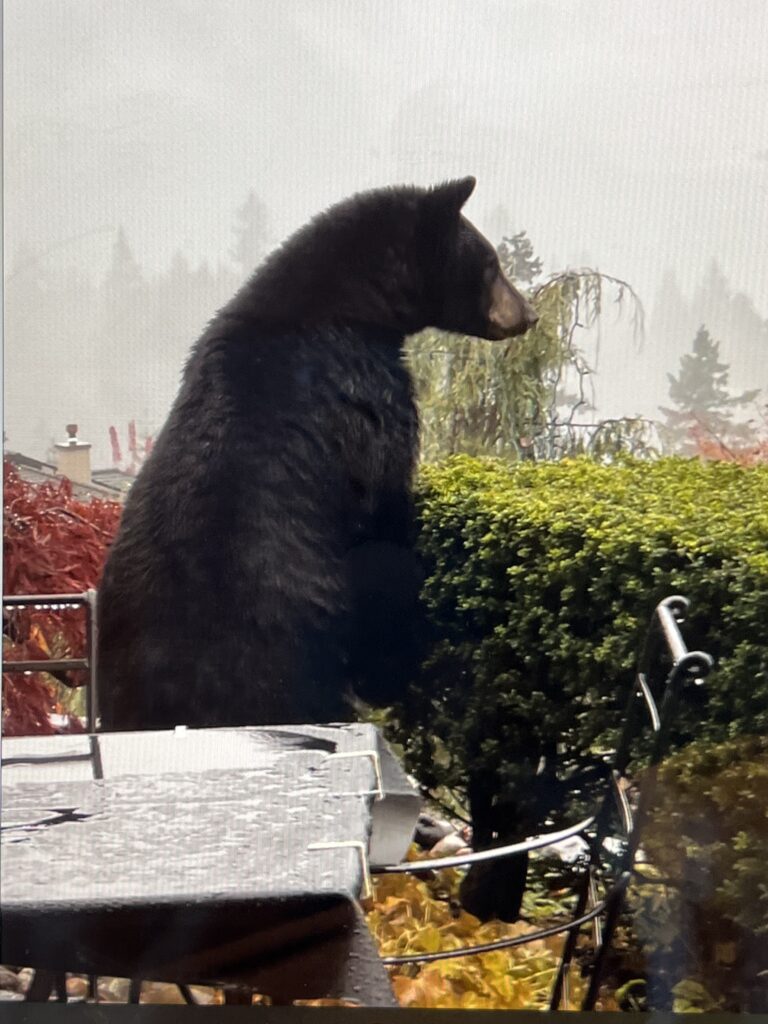
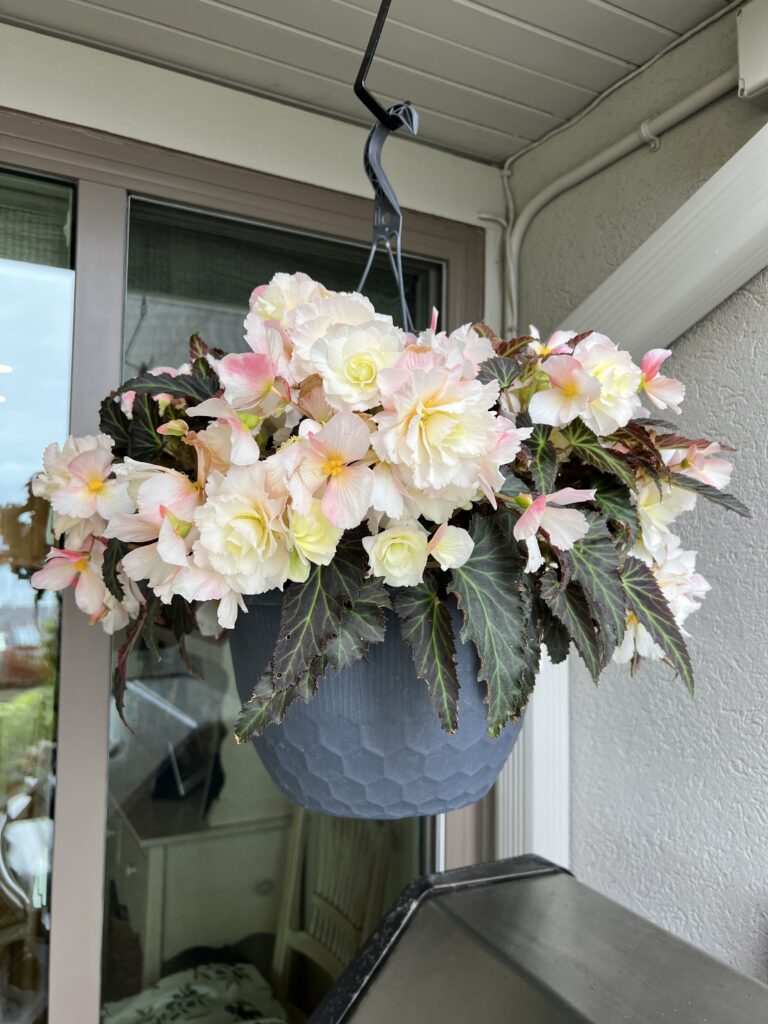
More Vancouver stories at Vancouver Travel-wise Tips

